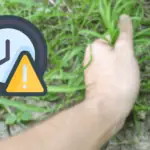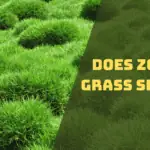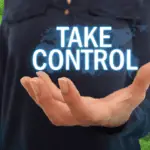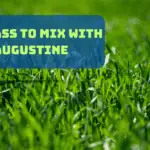The fine texture, low maintenance needs, and ability to thrive in warm regions make zoysia grass popular for lawns and landscaping. However, Zoysia grass can develop weeds like any other type of lawn.
Weeds can harm the health of your grass, and they can compete with it for resources like water, nutrients, and sunlight. Weeds can also give your lawn an unsightly appearance. Maintaining a healthy and attractive landscape requires recognizing and controlling weeds in your Zoysia grass lawn.
In this article, you will learn the strategies for preventing and eliminating common weeds in Zoysia grass, including manual pulling, Herbicides, and mulching, the benefits and disadvantages, and how to apply them efficiently.
Common Weeds in Zoysia Grass
Crabgrass, Goosegrass, and annual bluegrass are grass weeds since they resemble the lawn’s grass blades. A third form of weed, known as Sedges, is similar to grass but has triangular stems and is typically found in sections of the lawn that are wet or poorly drained.
Below are some of the common weeds in zoysia grass.
1. Dandelion

The most well-known of the common weeds in Zoysia grass is undoubtedly dandelion. Across the United States, one can find their bushy yellow blossoms, fluffy white seeds, and long, broad leaves of dandelion plants sticking near the ground.
One flower and one stem emerge from each plant. This complex plant won’t go away by being mowed over since it has a long taproot that will ensure its survival no matter how many times the top is removed. Therefore, take a weed puller out and carefully remove the entire root system.
2. Clover

Clover occasionally grows in lawns because it contains some blended grass seeds. You may not want Clover on your lawn if it has Zoysia grass. But it is crucial to maintain thick, lush Zoysia grass to keep out weeds, especially Clover, as they will sprout in any dry patches. To prevent weeds and maintain healthy-looking grass, spread sod or plant plugs in barren patches throughout my yard.
3. Lamb’s Tongue
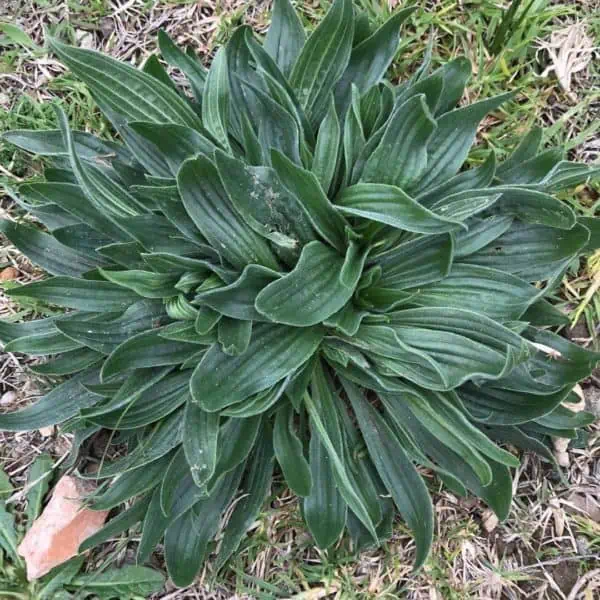
Now, if no one weed will stand out in your Zoysia grass like a sore thumb, it’s plantain. Lamb’s Tongue is another name, which makes sense given that the long, oval leaves resemble that animal.
Plantains thrive in compacted soil; therefore, I try to keep my soil properly aerated, especially in high-traffic areas. Therefore, if you find this weed in your Zoysia grass, pull it out by hand and don’t mow over it because it can spread by adhering to the mower blades.
4. Crabgrass
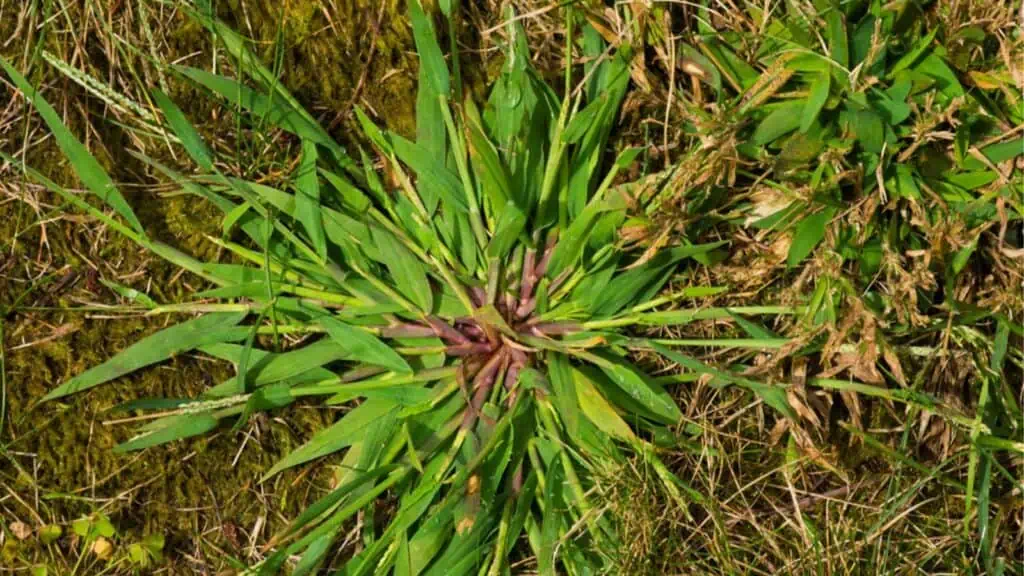
You may be asking what this grass has to do with crabs. It resembles a crab. The rough leaves of crabgrass grow downward like crab legs. Any barren places in your Zoysia grass will be quickly filled in by it. Crabgrass will return the following growing season if the roots aren’t removed before winter.
5. Goosegrass
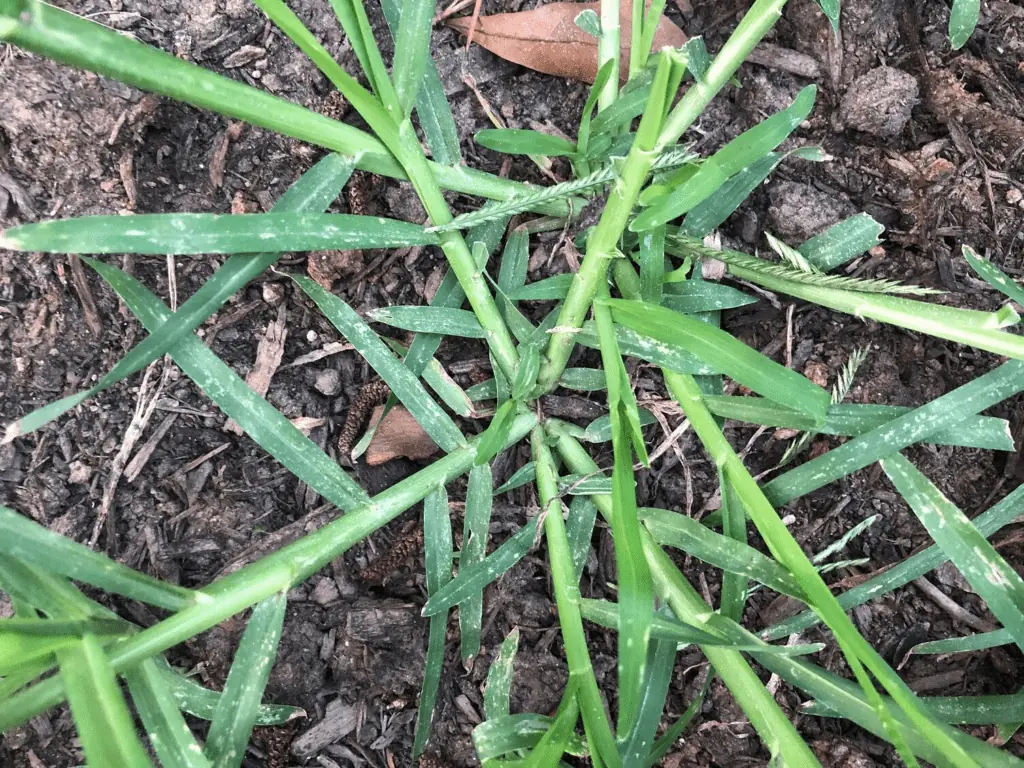
It can be challenging to distinguish Goosegrass from Crabgrass. Goosegrass also spreads outward along the ground and appears to have been trodden on. One notable distinction is that the Goosegrass stem appears silvery toward the center of the plant.
The most straightforward strategy to avoid Goosegrass is maintaining a lush, healthy lawn made of zoysia. Since each plant can generate over 50,000 seeds, Goosegrass quickly takes over bare spots in yards and spreads throughout the lawn.
6. Dallisgrass
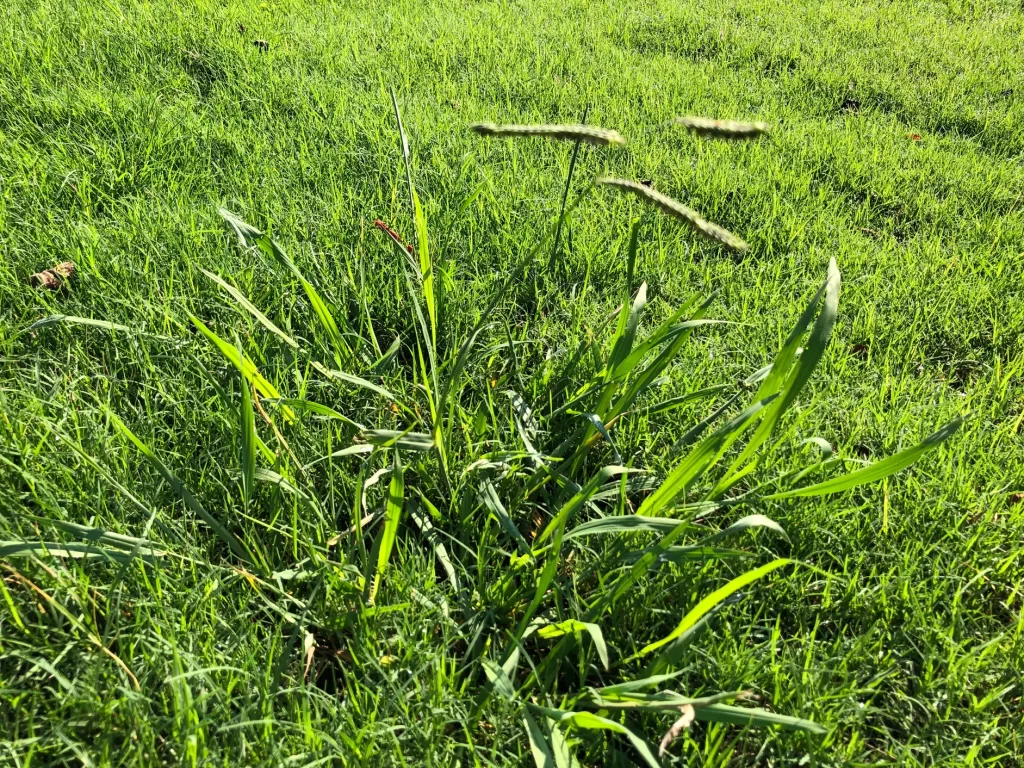
Dallisgrass is most likely present if you see circular grassy clumps that increase in diameter. This plant has caused problems for almost everyone in the southern states at some point, and your zoysia grass is no exception.
The seed head of dallisgrass is a straight-growing, rye- or wheat-like shape. When young, it resembles crabgrass, but as it matures, it becomes fuller and taller. If you want to eliminate this weed, herbicides might be your only option.
7. Sedges

Sedges are a particular kind of weed that closely resembles grass but has stems in a triangle shape. These weeds are frequently discovered in the lawn’s wet or poorly drained sections.
The two most prevalent Sedges in Zoysia grass are the yellow nutsedge and the purple nutsedge. A selective herbicide that kills sedges but leaves the Zoysia grass alone can be used to control these weeds.
Weed Control Methods For Zoysia Lawn
These methods are effective for some of the common weeds found in Zoysia grass.
1. Hand Pulling
The simplest and most organic way to control weeds is through hand Pulling. The weeds must be physically pulled out of the ground by hand.
Small weed infestations can be effectively removed by hand pulling at any time of the year. Hand plucking is an excellent alternative for small lawns or gardens because it can be done on a small scale and is focused on particular regions.
Advantages
- It’s a natural weed management strategy without the use of chemicals.
- There is no special equipment needed, and it is simple to do.
- For minor weed infestations, it works well.
- Children and pets can safely use it.
Disadvantages
- Hand Pulling can be labor-and-time-intensive, especially when there are several weeds present.
- Getting rid of the entire root system can be challenging, which could result in regrowth.
- If done carelessly, it could harm the nearby grass.
- It is only effective if you have a large lawn or garden.
2. Selective Herbicides
Selective herbicides eliminate certain weed species while leaving the desired grass alone. They come in various formulations, including pre-emergent, post-emergent, and systematic, and can be applied in liquid or granular form.
Advantages
- When suppressing weeds in Zoysia grass, selective herbicides are effective.
- They can take out certain weed species, like grassland or broadleaf weeds.
- With little effort, they are swift and applied.
- Selective herbicides can be used for extensive lawns or gardens and quickly cover a large area.
Disadvantages
- The cost of selective herbicides can be high.
- They can harm the environment and other plants that aren’t the focus.
- Herbicides are carefully handled since they can be harmful.
- Herbicide overuse can cause weeds to develop herbicide resistance.
- Some weed types may be resistant to Selective Herbicides.
3. Mulching
Mulching entails adding an organic or inorganic layer of substances to the soil, such as straw, wood chips, or plastic. Mulch can be used as a ground cover in beds and gardens or to surround mature plants.
Advantages
- Mulching can aid in weed control by preventing sunlight from penetrating the soil.
- Additionally, it can strengthen the health of the soil and aid with moisture retention.
- Mulch provides plants and landscaping with a beautiful touch.
- Mulch can increase the efficacy of weed-control strategies like hand pulling or herbicides.
Disadvantages
- Mulch can be pricey, mainly when bought in significant quantities.
- It can be challenging to apply and maintain on expansive surfaces like lawns.
- If not kept up with, it might also house pests or diseases.
- Some weed kinds are resistant to mulch, while others may not.
Conclusion
Broadleaf, grass, and sedge weeds are typical weeds in Zoysia grass. Regularly mowing, fertilizing, and watering your lawn can keep it healthy and avoid these weeds.
Removing weeds by hand, using targeted pesticides, or mulching are all effective weed management methods when they appear. Identify and correctly utilize the proper control strategy to stop a weed infestation from spreading.
The best-looking Zoysia grass can be maintained by routinely inspecting your lawn and eliminating any weeds as soon as they appear. Using herbicides correctly also requires following the manufacturer’s recommendations and avoiding over-applying the substance. With some maintenance, your Zoysia grass lawn can be lush and weed-free all year round.
Now that you know this, You can maintain the best-looking lawn all year long by being aware of the most typical weeds that Zoysia grass hosts and how to control them, as discussed in this article.

